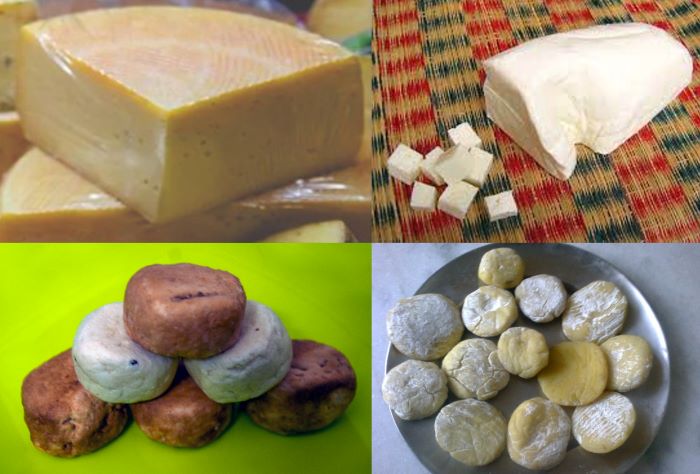Latest trends that will see rise in the Indian cheese type

Different types of cheese (clockwise from top left) Kalimpong, Paneer, Bandel and Kalari Cheese
Chef Rohit Singh
Millennial and Gen Z foodies are recreating classic dishes with a new upgraded twist. Adding specialty cheese is one of the easiest ways to upgrade the taste and look of the dish. It is a global trend at the moment. Restaurants are exploring unique ways of representing cheese in the food.
Brunch with cheese and wine is a rage in India. Back in the days many preferred cheeses that are imported, however, the Indian market is now coming up with usage of the Indian made cheese and have been promoting them aggressively. In fact, the Westerners are keen to explore cheese that are homemade or the ones that are not known internationally. Restaurants are now exploring international cuisines hence the cheese used is being substituted by Indian cheese.
Paneer Cheese: Not many know that Paneer which is a regular dish in every household in India is actually cheese. It is a fresh cheese that is also known as Chenna. It is made by curdling milk with a fruit- or vegetable-derived acid, such as lemon juice. The acid set form is called Chenna. Rasgulla is quite a rage amongst sweets specially in West Bengal and it is made up of boiled Chenna balls lathered with sugar syrup—and it is also used to make Sandesh, Rasmalai and Cham Cham, loved Bengali sweet.
Amul Cheese is an Indian originated brand which is being used in every house hold in India. It is one of the most trusted and commonly used cheese.
Kalari Cheese is faintly tangy, stretchy, stringy and is a huge contribution for one of the region’s most delightful street-side bites where kalari is fried on a tawa until crisp and golden in colour.
Another famous cheese in West Bengal is Bandel Cheese, it is a bit salty and crumbly, its name was originated from the town of Bandel in West Bengal, which was once under Portuguese territory. Available as small dumpling-sized balls in Kolkata, Bandel has a very dry texture and smoky flavour, and is often soaked overnight to soften. It is then added to dishes—sprinkled on crackers, tossed on salad, or sometimes, like feta, indulged covertly on its own.
International tourists and travelers in India have also promoted a cheese named after Kalimpong, a hill station in the Indian state of West Bengal. It is a little rustic, white, slightly acidic and a little crumbly in the centre with a relatively smooth rind that is yellowish on the inside, with a bit of a tangy taste. It is usually preferred with wine in the hilly regions of India.
Chef Rohit Singh is Sous Chef, THE Park – Navi Mumbai

